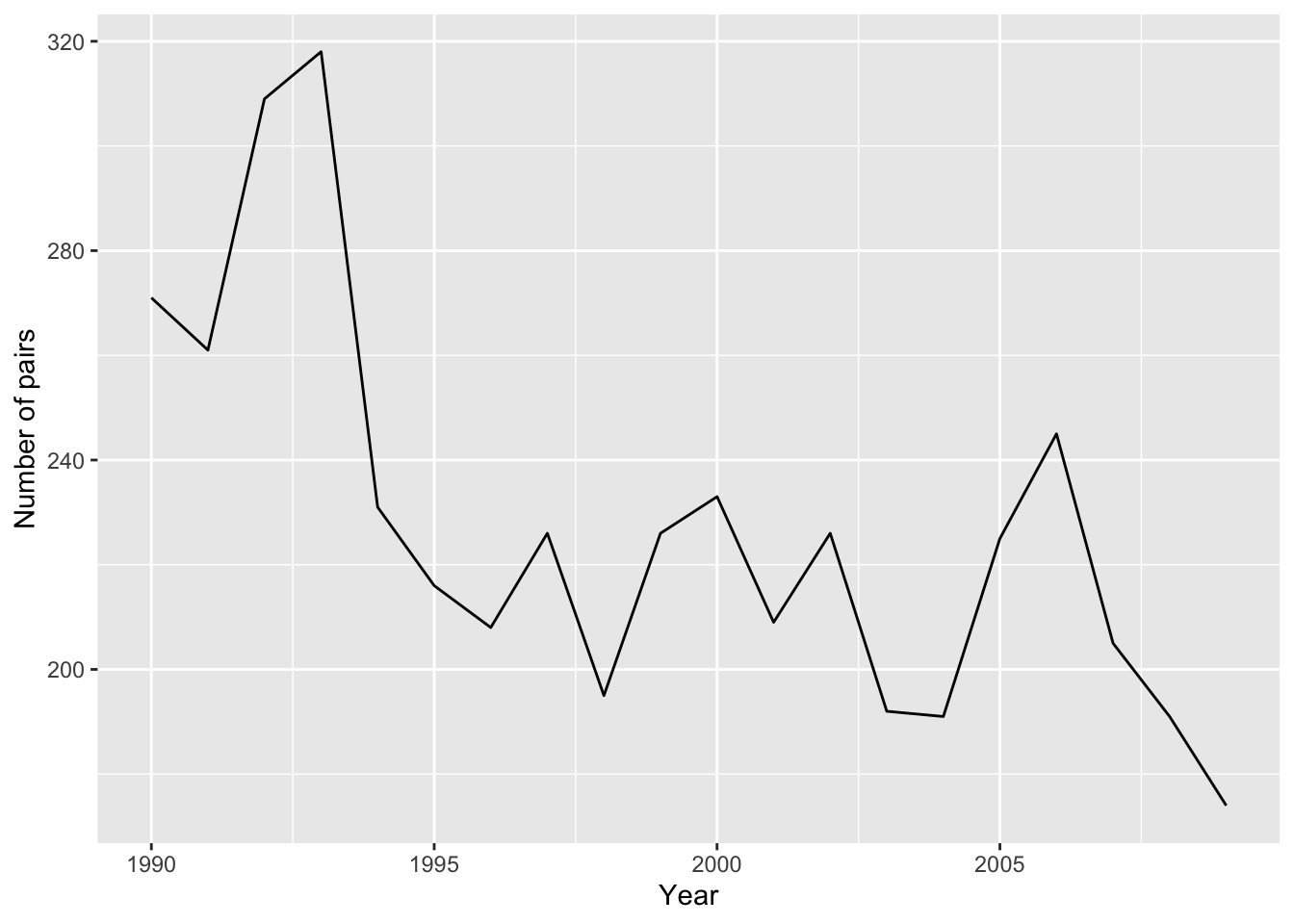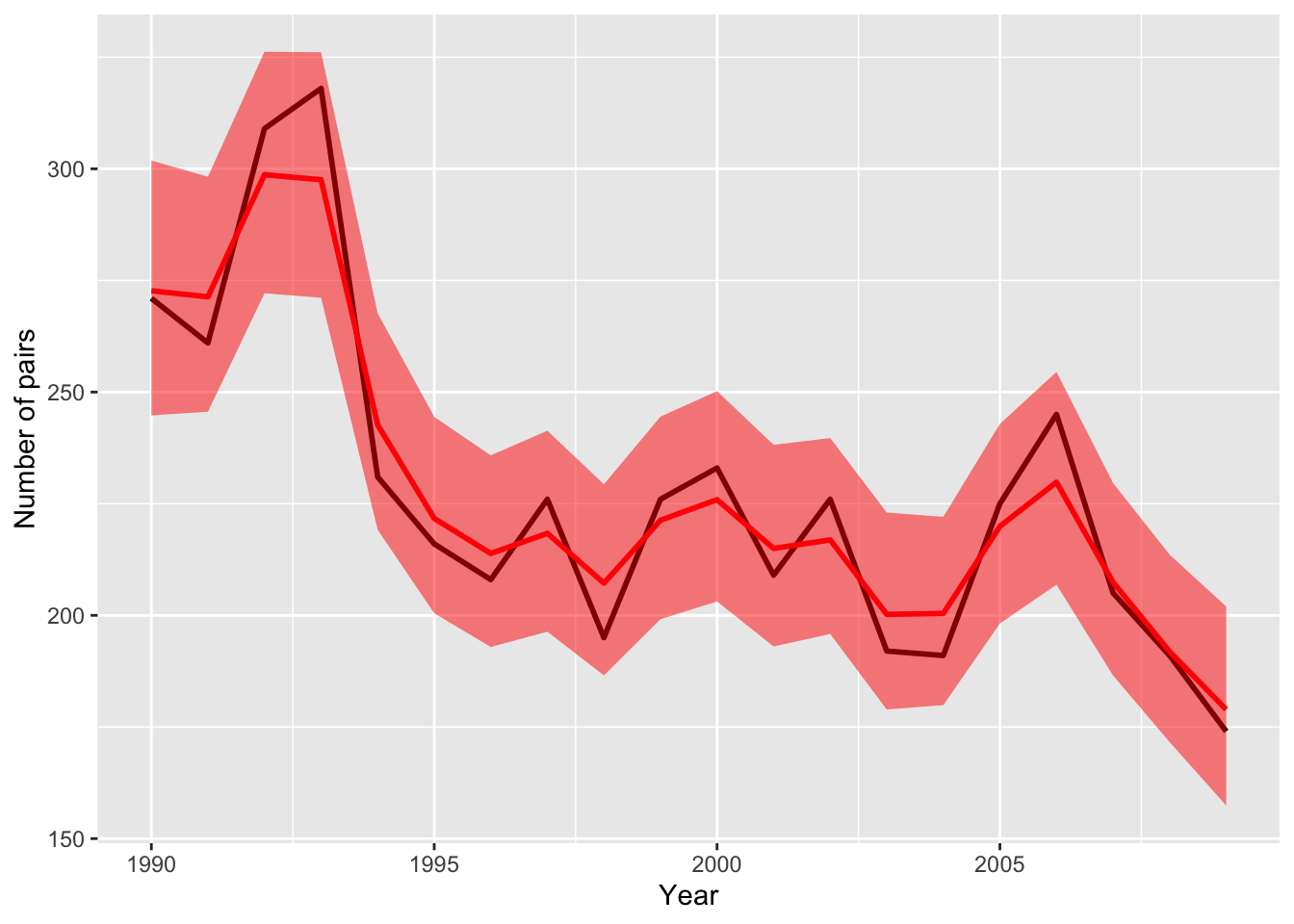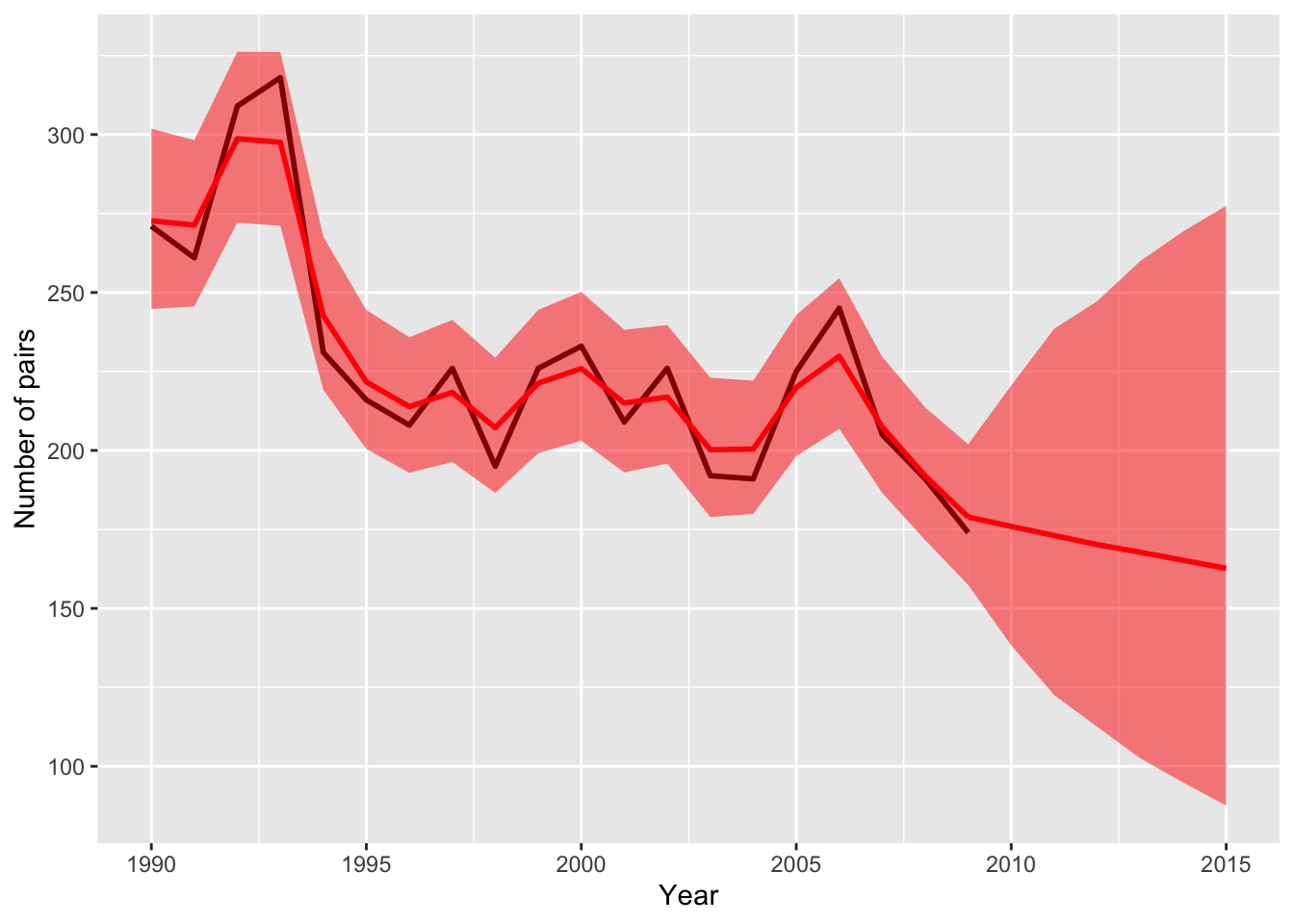library(ggplot2)
library(KFAS)
## Please cite KFAS in publications by using:
##
## Jouni Helske (2017). KFAS: Exponential Family State Space Models in R. Journal of Statistical Software, 78(10), 1-39. doi:10.18637/jss.v078.i10.
hm_data <- data.frame(year = 1990:2009,
n_pairs = c(271, 261, 309, 318, 231,
216, 208, 226, 195, 226,
233, 209, 226, 192, 191,
225, 245, 205, 191, 174))Bayesian Population Analysis using WinBUGS 第5章のイワツバメのデータをつかって、KFASで状態空間モデルのあてはめをおこないます。KFASでは、観測値が正規分布以外の分布も扱うことができます。
なお、この本の日本語訳は以下になります。
準備
使用するパッケージを読み込み、データをデータフレームに入れます。
データは、スイス北部マグデン村で1990年から観測された繁殖つがい数です。
データ確認
データを図示して確認します。
ggplot(hm_data, aes(x = year, y = n_pairs)) +
geom_line() +
labs(x = "Year", y = "Number of pairs")
モデル
KFASでローカルトレンドモデルを定義します。状態方程式の分散を推定するようにします。
model <- SSModel(n_pairs ~ SSMtrend(degree = 2,
Q = list(matrix(NA), matrix(NA))),
data = hm_data, distribution = "poisson")モデルをデータにあてはめます。
fit <- fitSSM(model, inits = c(1, 1), method = "BFGS")結果
推定された状態方程式の分散共分散行列(Q)を表示します。
fit$model$Q
## , , 1
##
## [,1] [,2]
## [1,] 0.009777207 0.000000e+00
## [2,] 0.000000000 1.424109e-07平滑化された状態の値(level成分とslope成分)を表示します。
KFS(fit$model) |>
coef(filtered = FALSE)
## Time Series:
## Start = 1
## End = 20
## Frequency = 1
## level slope
## 1 5.608739 -0.02219142
## 2 5.604090 -0.02219167
## 3 5.700414 -0.02219366
## 4 5.697258 -0.02219592
## 5 5.492649 -0.02219552
## 6 5.401490 -0.02219412
## 7 5.365687 -0.02219251
## 8 5.387129 -0.02219155
## 9 5.334758 -0.02219015
## 10 5.400136 -0.02219002
## 11 5.420438 -0.02219051
## 12 5.371030 -0.02219060
## 13 5.380261 -0.02219115
## 14 5.300501 -0.02219086
## 15 5.301470 -0.02219091
## 16 5.394313 -0.02219264
## 17 5.439224 -0.02219534
## 18 5.335534 -0.02219686
## 19 5.256944 -0.02219755
## 20 5.187076 -0.02219755観測値のスケールで平滑化された値(赤線)を観測値(黒線)に重ねて図示します。
pred1 <- predict(fit$model, type = "response",
interval = "confidence", level = 0.95,
nsim = 1000)
hm_data$fit <- pred1[, "fit"]
hm_data$lwr <- pred1[, "lwr"]
hm_data$upr <- pred1[, "upr"]
p1 <- ggplot(hm_data) +
geom_line(aes(x = year, y = n_pairs),
color = "black", linewidth = 1) +
geom_line(aes(x = year, y = fit), color = "red", linewidth = 1) +
geom_ribbon(aes(x = year, ymin = lwr, ymax = upr),
fill = "red", alpha = 0.5) +
labs(x = "Year", y = "Number of pairs")
plot(p1)
予測
6年先までの予測値を求め、95%信頼区間とともに図示します(橙色)。
last_year <- max(hm_data$year)
pred_years <- 6
pred2 <- predict(fit$model, n.ahead = pred_years,
interval = "confidence", level = 0.95,
type = "response",
nsim = 1000)
pred_last <- hm_data |>
tail(1)
hm_pred <- data.frame(year = last_year:(last_year + pred_years),
prediction = c(pred_last[, "fit"], pred2[, "fit"]),
lower = c(pred_last[, "lwr"], pred2[, "lwr"]),
upper = c(pred_last[, "upr"], pred2[, "upr"]))
p1 +
geom_line(data = hm_pred,
aes(x = year, y = prediction),
color = "red", linewidth = 1) +
geom_ribbon(data = hm_pred,
aes(x = year, ymin = lower, ymax = upper),
fill = "red", alpha = 0.5)
結果は元の本の、WinBUGSで推定したものとだいたい同じになりました。
